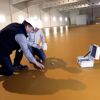Samtliche Fußböden, die nicht zu Wohnzwecken oder als Straßen genutzt werden, werden zu den Industrieböden gezählt. Neben der Gewährleistung der Tragfähigkeit soll der Industrieboden langzeitbeständig gegen möglichst viele Arten der vorhandenen Einwirkung sein und dabei nur ein Minimum an Pflege und Wartung benötigen.
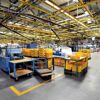
Industry floors
Floors for various utilisations
The term ‘industrial floor’ is a generic term for floors with a wide range of utilisations, e.g.:
- Floors in factory halls, operating rooms and laboratories
- Floors of transport paths
- Floors for bearing surfaces
All floors that are not used for residential purposes or roads are considered industrial floors. In addition to the guaranteed load bearing capacity, the industrial floor should also be highly resistant to many types of influencing factors in the long term and only require a minimum of care and maintenance effort.
An industrial floor generally has a multi-layer construction. Whilst there are norms or guide lines that exist on principle for the individual layers, there is no one complete or overriding standard for industrial floors with their various construction layers.
Areas of application
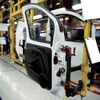
Mechanically durable and wear-resistance
The requirements relating to the floor coating systems in the automotive industry, in the machine construction sector and its suppliers are diverse. Often, the main priority of these floors is the mechanical loading capacity.
The heavy-duty machine and systems used here exert area loads and point loads onto the subsurface. In addition there are also moving production components whose weights act irregularly onto the floor.
Unsuitable floor coatings can become seriously damaged under the pressure and lose their functionality. Remmers supplies high-quality floor coating systems for the automotive and machine construction industries that are specially designed for the individual requirements. The good flow properties ensure an even and level surface. Also, they are specially non-slip and wear-resistant, and therefore ensure a high level of safety combined with excellent longevity

Conductive and ESD-compatible
The correct ESD-compatible floor coatings (ESD = Electrostatic discharge) play an important role in the electronics industry. Electrostatic charges are an omnipresent problem in the electronics industry and differ from one another in various ways. Generally, humans absorb electrical charges via the floor. If one touches e.g. a metallic object, the numerous negative charges will be suddenly transferred to this object.
This short power surge is enough to permanently damage electronic parts and elements. The high-quality ESD-compatible floor coatings by Remmers prevent electrostatic charging of humans and machines. Healthy, safe and efficient work practices are guaranteed by this special property.
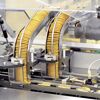
Innocuous and hygienically flawless
One of the most demanding industrial areas for the floor is the food industry, because in addition to the mechanical loads exerted by heavy-duty machines and chemical loads by aggressive media, there are very strict hygiene regulations that need to be observed.
Sensitive goods are produced, stored and fabricated here every day. Correspondingly, floor coatings need to be applied seamlessly, and without pores or joints. Simple cleaning is essential.
Remmers floor coating systems for the food industry are physiologically safe, slip-resistant, temperature-resistant, joint-free and easy to maintain. In addition, they are low-emission in compliance with the Council Directives of the German Committee for Health-Related Evaluation of Building Products (AgBB). In combination with an excellent resistance to various aggressive food constituents, Remmers floor coatings satisfy all flooring requirements in the food industry.
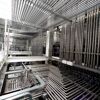
Liquid-tight and chemically-resistant
A multiplicity of aggressive chemicals are used for production purposes in the chemical and pharmaceutical industry.
Be it mineral oils, greases or caustic acids and alkalis - floor coatings in production halls and laboratories are permanently exposed to loads. Remmers also supply their own developed floor system solutions that are not only extremely resistant to chemicals, they are also liquid-tight, they can bridge cracks and are extremely resistant to mechanical loads. There are systems that offer non-slip properties even when wet to ensure excellent indemnity in the long term.
With the stratification of hazardous substances with very low flash points it is extremely important to use high-quality and conductive floor coating systems.
Determine the subsurface. Analysis the condition. Define loads
Technical analysis
There are a number of factors that need to be taken into account when selecting a suitable floor coating system. The first step is to analyse the substructure. For instance, a pure concrete floor requires other coating properties than a screed of mastic asphalt for jointless floors. In a second step, the condition of the floor needs to be examined, e.g. by measuring the adhesive pull strength or the level of moisture. In a third step, the loads to which the floor is exposed after the coating, is defined precisely.

Methods for examination of the substructure
The most important part of an industrial floor is the subsurface and its properties. The subsurfaces differ in many ways, e.g. in their compressive strength and adhesive pull strength, the moisture level or the surface structure. Careful analysis and examination is therefore essential to ensure that the optimum system structure for the floor coating can be selected and applied.
-
Compressive strength
-
Adhesive pull strength
-
Examination of damaged areas
-
Moisture measurement
-
Examination for cracks
Coating systems - the perfect solution for every floor
After in-depth analysis of the existing subsurface’s properties the matching coating system can be selected and installed. The coating types range from simple seals through to grano sprinkling finishes and conductive systems. Special requirements are made of the system design especially at e.g. base connections.
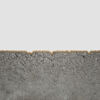
Sealings have a protective effect against slight to medium loads, and represents an inexpensive option with a layer thickness of up to 0.5 mm.
Properties:
- Protects reliably (e.g. against weak acids)
- Follows the surface structures
- Inexpensive
- Floors subject to slight to medium loads
- Production and storage areas
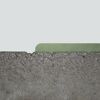
Flow coats can compensate smaller areas of unevenness on the subsurface. The material is distributed evenly and flows on through which it creates a smooth surface. A layer of a thickness of up to 3.0 mm. Depending on the system, claw cuts according to the information in the technical code of practice may be necessary.
Properties:
- Self-flowing
- Pigmented
- Medium mechanical and chemical resistance
- Evens out smaller areas of roughness
Application:
- Areas without sliding agents that require sure footing
- Areas with dynamic loads

The grano sprinkling finish comprises a flowable base coat into which the blinding materials are added in full (e.g. quartz sand or Hard Stuff). After setting, the unbound excess is removed and a topcoat is applied. The layer thicknesses may vary between 1.5 and 9.0 mm. Depending on the system, claw cuts according to the information in the technical code of practice may be necessary.
Properties:
- High mechanical, thermal durability depending on the system
- Slip-resistant, sage surface
- Can be set individually
Application:
- Permanently wet areas
- Metal working
- Food industry
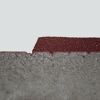
The mortar coat has the lowest amount of binding agents and a finely matched filling material grading curve. The mortar mix is suitable for use with blades and then needs to be smoothed with a trowel. The layer is at least 4.0 mm thick. Depending on the system, claw cuts according to the information in the technical code of practice may be necessary.
Properties:
- Very highly mechanical durability
- Compensates larger areas of unevenness
- Slip-resistant
- Can also be installed on gradients
Application:
- Areas which need to be slip-resistant
- Areas where no displacement factor is specified
Always accessible – always on the go. With more than 250 highly qualified technical representatives, Remmers is always close at hand.
Contact us and arrange an individual attending. We are looking forward to meeting you!



